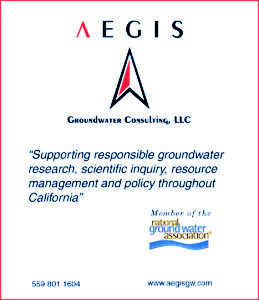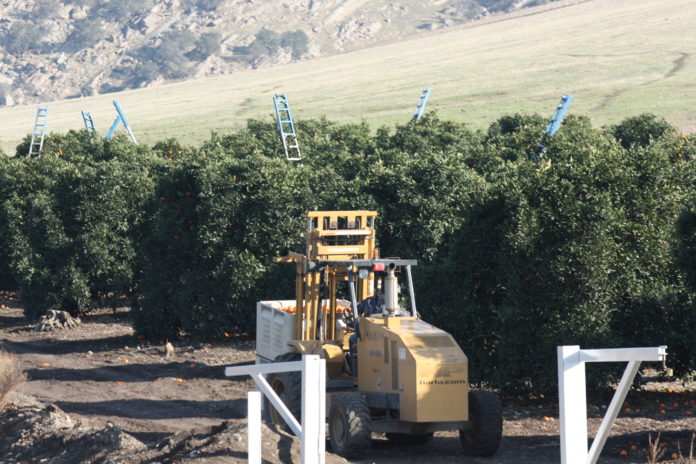 By Scott Hamilton Scott@ResourceEconomics.net
By Scott Hamilton Scott@ResourceEconomics.net
The following article first appeared in Valley Voice in August 2021. As many prepare to attend the Kaweah Subbasin SGMA event on Thursday, July 13th at the International Ag Expo in Tulare it would be good to keep in mind there are more people working on solutions than one always realizes.
The Sustainable Groundwater Act (SGMA) has had some unfortunate side effects. It has pitted neighbor against neighbor and water district against water district to fight for the last uncaptured remnants of water in the Valley. These fights are frequently contentious and emotional. And nothing less than future of some farms is at stake. But there is an alternative. Rather than fighting over pieces of the existing water pie, the pie can be made bigger. But this is California, and politics, particularly water politics, can present challenges of monumental proportions.
How are such challenges tackled? Tim Quinn is a seasoned water manager. He worked for the Metropolitan Water District of Southern California (MWD) developing partnerships with water districts in the Valley to create water banking programs – programs that benefited both the water districts and MWD. Back then, MWD and the Kern County Water Agency had their issues, and they weren’t necessarily friends. But Tim could see that the two had more to gain by working together than by fighting. While at MWD, Tim also helped negotiate the Bay-Delta Accord which was one of the early fights over Delta water, primarily pitting environmentalists against water users. While neither side got everything they wanted, the Accord ushered in a period of stability in water management. Tim eventually moved from MWD to head up the Association of California Water Agencies. Again, Tim had a forum where water districts disagreed with each other, and most of them were concerned about the balance between water for the environment and water for people. Eventually Tim (somewhat) retired and now has an adjunct position at Stanford University. Fortunately, however, his water experience and perennial optimism has not been lost.
both the water districts and MWD. Back then, MWD and the Kern County Water Agency had their issues, and they weren’t necessarily friends. But Tim could see that the two had more to gain by working together than by fighting. While at MWD, Tim also helped negotiate the Bay-Delta Accord which was one of the early fights over Delta water, primarily pitting environmentalists against water users. While neither side got everything they wanted, the Accord ushered in a period of stability in water management. Tim eventually moved from MWD to head up the Association of California Water Agencies. Again, Tim had a forum where water districts disagreed with each other, and most of them were concerned about the balance between water for the environment and water for people. Eventually Tim (somewhat) retired and now has an adjunct position at Stanford University. Fortunately, however, his water experience and perennial optimism has not been lost.
The Water Blueprint for the San Joaquin Valley emerged some two years ago with a bold and innovative plan to bring substantial quantities of new water into the Valley. And Tim was present to hear the earliest version of the plan. He recognized then that such a plan was going to need a broad base of support if it was to succeed. Water districts “staying in their silos” was unlikely to get it done. So Tim did what he does best – bring together a group of strangers with potentially common interests. He recognized that it wasn’t just farmers that needed more water in the Valley. The environment and communities were also hurting. And clearly there wasn’t enough water to go around.
Tim talked with past friends and colleagues and formed the Collaborative Action Program for the San Joaquin Valley or CAP for short. The CAP is now comprised of more than 60 entities representing farmers, water districts, local government, environmentalists and disadvantaged communities. Together they have clarified problems, identified desired outcomes and developed solutions sets. Now the hard work starts – going from concept to reality and developing a plan that will indeed have wide support.
But farmers and environmentalists haven’t always seen eye-to-eye. So its natural for this process to raise some concerns among farmers. Valley Voice posed some tough questions to Tim. Here are those questions and his responses.
Farmers and environmentalists have fought for decades over San Joaquin River water and water supplies from the Delta. Why are you advocating now that they should work together?
The fact is we didn’t get much done with all that fighting – and there is a growing recognition of that fact amongst water leaders in the San Joaquin Valley. In my 40+ year career in California water, I was fortunate to be part of many success stories, including here in the San Joaquin Valley. And all those successes were the result of collaboration. The most important lesson from my career is that collaboration works, and conflict doesn’t.
here in the San Joaquin Valley. And all those successes were the result of collaboration. The most important lesson from my career is that collaboration works, and conflict doesn’t.
You spent many months putting together a leadership team for this process. Why did you select them, in particular?
I didn’t so much find the leaders in the CAP as they found the process. I suppose that I should get some credit for recruiting the CAP Co-Chairs – Ashley Swearengin, the CEO of the Central Valley Community Foundation, and Buzz Thompson, the Faculty Director of the Stanford University Water in the West Program. They are extraordinary leaders who understand that a successful collaboration requires leadership from the “bottom up” and not from the “top down”. In addition, CAP has strong momentum right now because water and agricultural leaders from the Valley are working alongside environmental leaders, safe drinking water advocates, and local government officials – and all of them realize that they can accomplish more working together than they can fighting each other.
What kind of solutions is the CAP considering?
For CAP to succeed, we will need a truly comprehensive program that works for all the interests (or caucuses) together. The CAP recently adopted five “desired outcomes” that include sustainable water supplies for the farm economy and Valley communities; safe and affordable drinking water for every household in the Valley; and substantial increases in floodplain, riparian, and upland habitat to support an array of species. By the time CAP is done we will be implementing projects that allow for significantly more replenishment of groundwater basins; repairing subsidence-impacted conveyance facilities to restore their capacity; constructing water distribution and treatment facilities that assure everyone in the Valley has access to safe drinking water; and creating an environmental restoration program that ranks with the best in the nation.
It seems like every time water districts and environmentalist sit down at a table, farmers lose water, and then the supplies farmers thought they had remaining, continue to be eroded by even more regulations. What assurance can you give farmers that a proposed solution will have “shelf life”?
It’s important for Valley Voice readers to know that in the last decade there have been a lot of successful partnerships between Valley water districts and farmers and environmental NGOs. That is true in Kern County, the Tulare Basin, and the northern reaches of the Valley. Many environmentalists are showing an increasing desire to better understand and appreciate the Valley’s agricultural world, and they have analytical tools that water managers are finding helpful to better manage the Valley’s water. Water users are benefiting from that. In our democracy, what makes a program have “shelf life” is a very broad-based coalition of supporters who want to assure that the program moves forward as planned. That is exactly what CAP is designed to deliver.
Valley. Many environmentalists are showing an increasing desire to better understand and appreciate the Valley’s agricultural world, and they have analytical tools that water managers are finding helpful to better manage the Valley’s water. Water users are benefiting from that. In our democracy, what makes a program have “shelf life” is a very broad-based coalition of supporters who want to assure that the program moves forward as planned. That is exactly what CAP is designed to deliver.
Several farmers and water districts are participating in the CAP process? How well do you think they are representing Valley farmers, particularly small family farmers?
CAP has exceptionally broad participation by farmers and others in the agricultural industry from every corner of the Valley. In fact, the agricultural caucus is the largest in the CAP process. There are 19 members in the ag caucus representing the interests of farmers and most of them are family farmers themselves. For perhaps the first time, the family farmer has a voice in shaping Valley water policy and that voice is being heard.
Are you optimistic about this process?
I am known in the California water industry for having “optimism beyond reason” but optimism is justified when it comes to CAP. We have extraordinarily gifted leaders, participants who firmly believe that they can accomplish more for the interests they represent by working collaboratively with each other, and a world-class team of facilitators that we recruited from Washington state. No less important, we have a genuine crisis. All those years of fighting over water have led us to a “perfect storm” in Valley water management. Failure is simply not an option – and I believe that all those engaged in the CAP understand that.
Tim clearly believes the Valley is worth fighting for. The Irish poet, William Butler Yeats is attributed with saying: there are no strangers here, just friends I haven’t met.
DISCLAIMER OF RESPONSIBILITY; Waterwrights.net strives to provide its clients with the most complete, up-to-date, and accurate information available. Nevertheless, Waterwrights.net does not serve as a guarantor of the accuracy or completeness of the information provided, and specifically disclaims any and all responsibility for information that is not accurate, up-to-date, or complete. Waterwrights.net’s clients therefore rely on the accuracy, completeness and timeliness of information from Waterwrights.net entirely at their own risk. The opinions expressed in this report are those of the author and do not represent any advertisers or third parties.
Waterwrights.net does not serve as a guarantor of the accuracy or completeness of the information provided, and specifically disclaims any and all responsibility for information that is not accurate, up-to-date, or complete. Waterwrights.net’s clients therefore rely on the accuracy, completeness and timeliness of information from Waterwrights.net entirely at their own risk. The opinions expressed in this report are those of the author and do not represent any advertisers or third parties.
ALL RIGHTS RESERVED. Copyright 2023 by WaterWrights.net






























